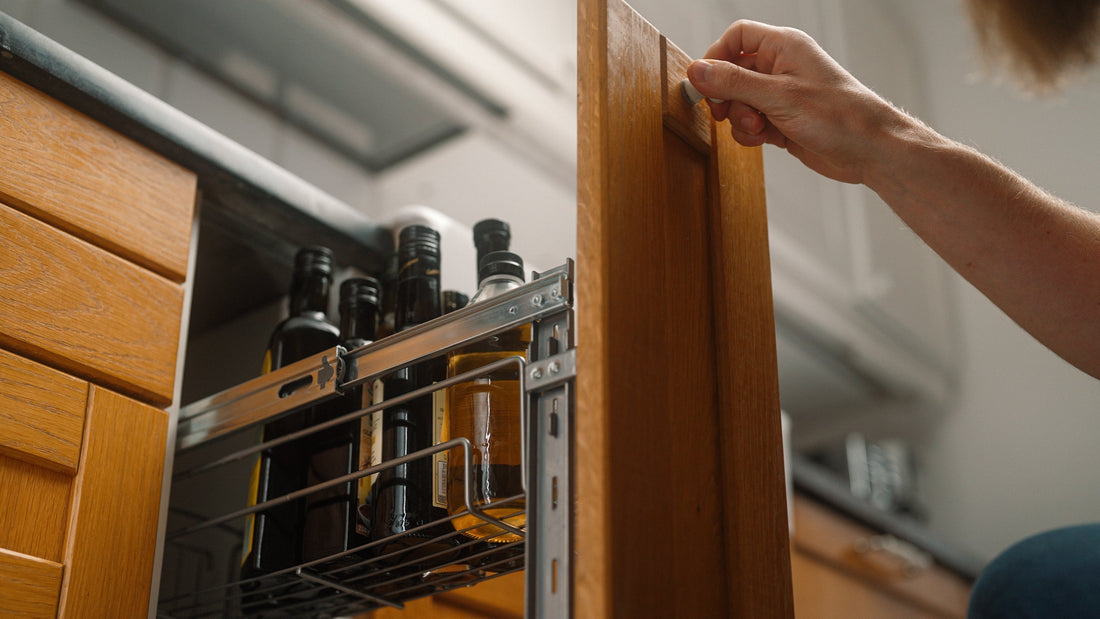Are your hinges squeaking, your seals sticky and your guides sluggish? A thin layer of silicone grease can keep your equipment quiet, protect it and make it last for months. In this guide, we'll show you step-by-step how to use silicone grease—where it works best, how often to apply it, and how to store it so it's always at hand and in top condition.
Silicone grease is great for looking after rubber and plastic parts. It's hydrophobic (repels water), resistant to washing, doesn't stain, doesn't dry out, and doesn't freeze under typical operating conditions. Also, silicone grease doesn't conduct electricity, so it helps protect the insulation of electrical components. It's no surprise it's a staple in both the garage and the toolbox.
Where does it work best? Here's a handy guide to help you out
Rubber seals: car doors, windows, hatches, refrigerators
- How to use: apply it in as thin a layer as possible all over the length, then massage it in and wipe off any excess.
- Why: prevents freezing in winter, cracking and squeaking; prolongs flexibility.
- How often: every 4–8 weeks, more often in winter (e.g. every 3–4 weeks).
O-rings / static seals
- How to use: Lightly coat the ring with grease before assembly.
- Why: it's easier to install, it'll last longer, and there's less chance of leaks.
- How often: every time you install or replace it.
Guides, hinges, sliders, locks (plastic/metal + plastic)
- How to apply: just put a bit on the spot, and then move the element a few times before wiping off the excess.
- Why: eliminates squeaking and resistance, does not stain.
- How often: when squeaking occurs or after washing/winter.
Connectors and insulation (dielectric properties)
- How to use: Just disconnect the power, put on a thin layer of this stuff on the rubber/plastic insulators and sockets, but not on the exposed current contacts.
- Why: protects the insulation against moisture and corrosion.
- How often: as needed, e.g. after washing/flooding or during service.
Household appliances and home
- Dishwasher/Washing Machine – Door Seals: Thinly wipe off excess; every 1–2 months.
- Drawers, blinds, mosquito nets, locks, zippers: spot, ad hoc.
- Silicone in the bathroom (fittings, O-rings in the shower head, connectors): thin, after inspection – every 2–3 months.
How to use: Here's how to get rid of noise and make things smooth
Get ready to grab a soft microfibre cloth, a cotton swab/brush, or a small sponge. Put on your gloves.
- Give the surface a clean and dry it off. Then get rid of any dust, sand and old grease. If you need to, give it a wipe with a degreaser and make sure it's completely dry – water and dirt will affect how well it works.
- Just apply a thin layer, taking a small amount (the size of a pea) and spreading it evenly. When it comes to silicone, less is more – too much will just trap dust and look "greasy".
- Spread the lubricant and get rid of any excess. Massage it into the surface. After 10–20 seconds, give it a wipe with a dry cloth to leave a thin protective layer. The silicone doesn't dry out – it works straight away.
Here's a good tip: if you're reaching tricky spots (like grooves, locks, or profile seals), use a cotton bud or a small brush.

Best practices: little product, maximum effect
- As they say, less is more. A thin film provides the best protection; just wipe off any excess with a cloth.
- Just remember to always apply it to a clean, dry surface. Dirt can make it perform worse and attract dust..
- Give it a wash, a downpour or a rinse (on your car, bike or garden). Then put on another layer.
- Only work on electrical systems when the power is off. First things first, turn off the power.
- Just remember to always test on a small area, especially when working with painted or delicate materials.
How often should I lubricate? (quick guide)
- Car door seals: every 4–8 weeks, more often in winter.
- Household appliance seals: every 1–2 months.
- O-rings: at every installation/replacement.
- Guides/hinges/sliders: temporarily, when resistance or squeaking occurs.
Please note: usage conditions vary depending on your hardware and environment.
The most common mistakes and how to avoid them
- If you put on too much of a layer, dust will attract to it and it'll end up looking all "greasy". Solution: wipe dry, leaving only a thin layer.
- If you apply it when it's wet or dirty, it'll have a worse effect and won't last as long. Solution: Go back to the "Clean and Dry" step.
- Working under pressure. Solution: First thing's first, turn the power off. And when you're applying the silicone, make sure you stick to the insulation/housing, not the bare contacts.
Storage and shelf life
- Keep the lubricant tightly closed, at room temperature, away from heat and UV rays.
- Just make sure you don't contaminate the packaging – use a clean tool.
- Once opened, the product will keep its properties for ages; if you see that it's separated, just give it a stir before using it.
- Just don't let it freeze or overheat. Just a heads-up: always check the temperature range on the product label, and use it according to the manufacturer's recommendations.
Summary
Universal silicone grease is a great way to make seals last longer, make it easier to install O-rings, keep hinges and guides quiet, and even look after your household appliances. The trick is to make sure the surface is nice and clean, and that there's a thin layer of something to stop it from rusting. And don't forget the safety rule: don't lubricate electrical contacts or components that need friction, and only use products with the right certifications for applications near food.
Prounol silicone grease is great for jobs that need a bit of extra oomph. It's a good idea to keep a can or two on hand, whether you're at home, in the garage or in the workshop.

